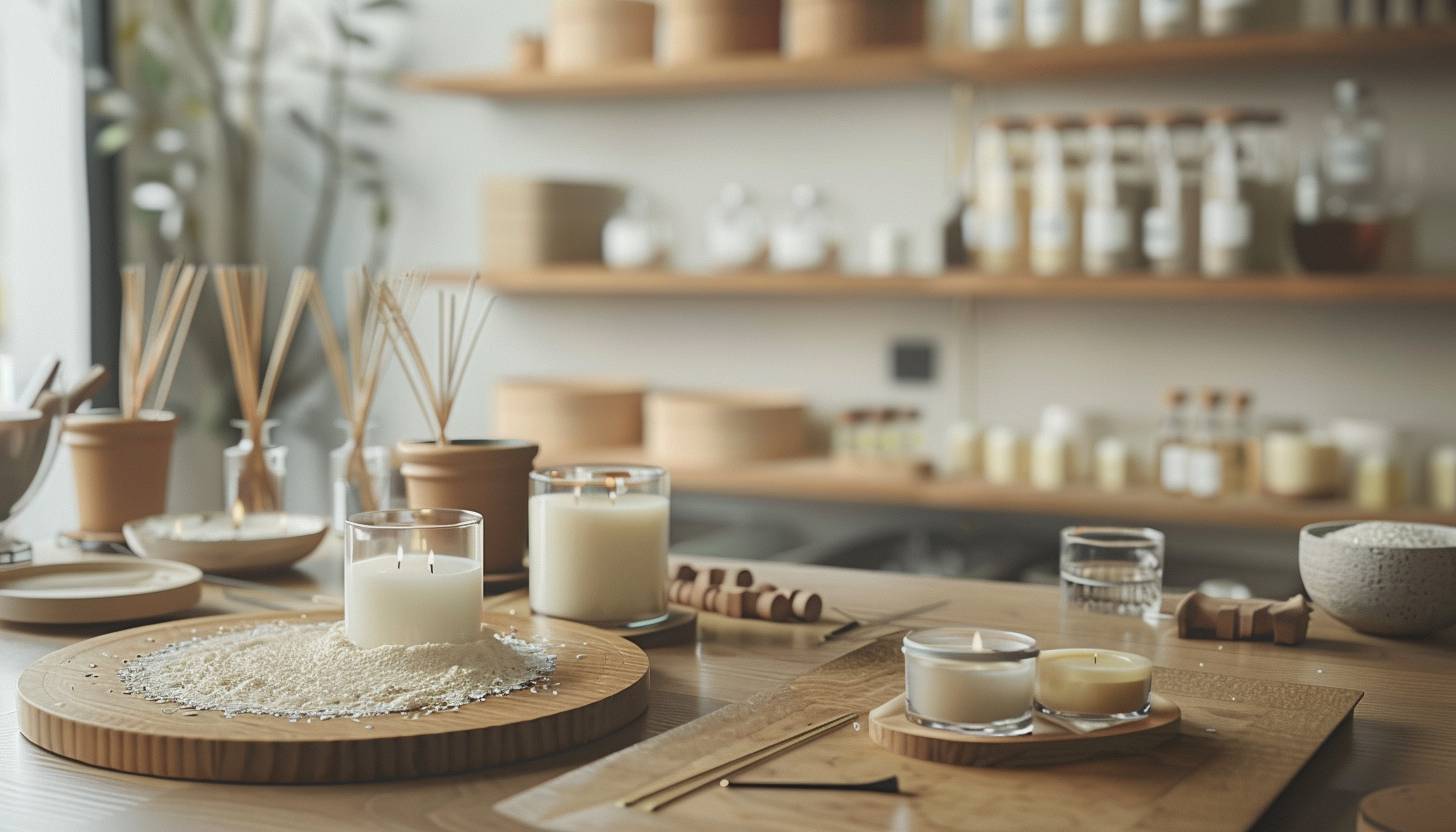Candles have been around for thousands of years, from being a source of light to a symbol of warmth, relaxation, and ambiance. The candle industry has been dramatically growing for the last couple of years because of the increased interest in home fragrances, aromatherapy, and handcrafted products among consumers. This article helps in how to start a candle business that makes candle making an excellent business opportunity for those aspiring entrepreneurs who are interested. Whether a small home-based business or a large-scale brand, knowledge of the industry is the first step towards building your successful candle business.
Part 1: Understanding the Candle Business
A candle business is basically the manufacture, marketing, and selling of candles for various purposes, such as home decoration or aromatherapy, gift, or religious usages. Entrepreneurs in this industry have many opportunities to work with handmade artisan candles or high volumes mass-produced candles for retail shops. The candles may be sold on e-Commerce platforms, local markets, gift shops, or at wholesale directly to large distributors in order to distribute them to retails. If you have a question that how to start a candle business than there are many kinds of candles in the market that cater to the different customer preferences.
Aromatherapy Candles
Aromatherapy candles that contain lavender, eucalyptus, and chamomile essential oils work to promote relaxation and wellness. Consumers who are seeking relief from stress and self-care products largely prefer these types of candles.
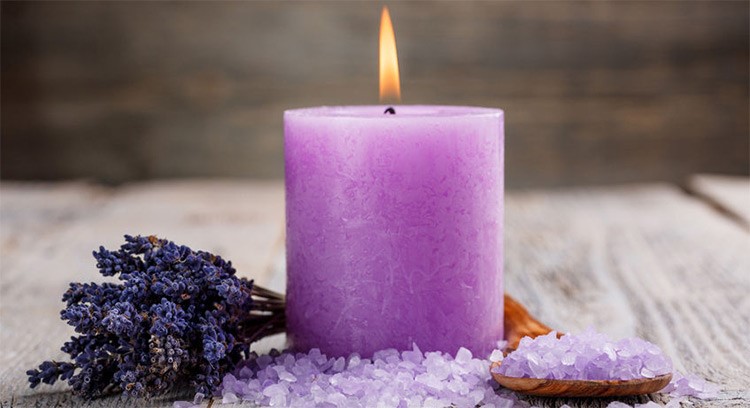
Decorative candles
Decorative candles design to be beautiful. They have modern designs, some in extraordinary shapes, or colorful skin, so they suit home decorative products or as gifts. Many buy them on occasions like wedding dates, birthdays, and holidays.
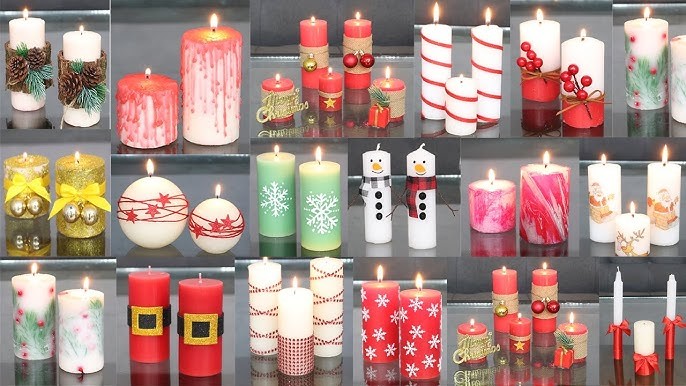
Soy candles
Soy candles have gained popularity as an eco-friendly alternative to traditional paraffin candles. Made from soybean oil, they burn cleaner and longer. Thus, they are truly the favorite of today’s environmentally-conscious consumer. Likewise, beeswax candles are appreciated for their natural air-purifying property and the subtle honey-like scent.
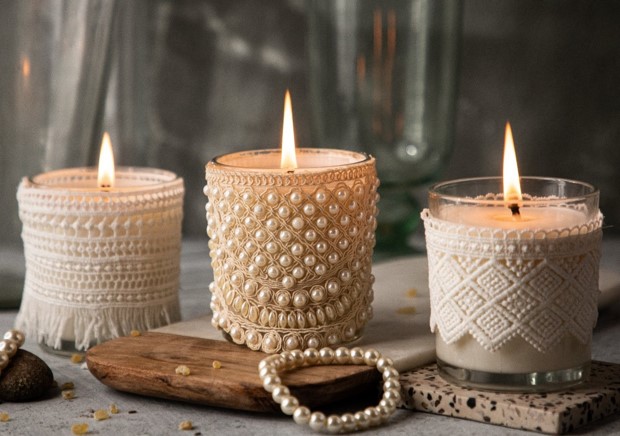
Luxury candles
Luxury candles are designed for high-end consumers who are looking for premium products. Such candles are made from high-quality ingredients such as coconut wax, wooden wicks, and custom fragrance blends. Many luxury brands focus on sophisticated packaging and branding to create an upscale experience.
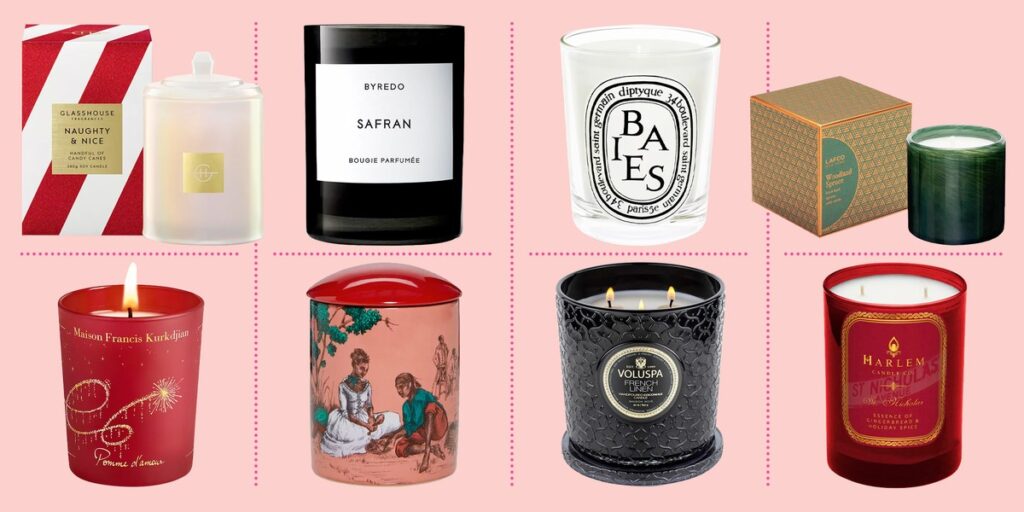
Gel candles
Gel candles, which are transparent and jelly-like in appearance, are often used in decorative functions. They may also contain small objects such as seashells, dried flowers, or glitter for aesthetic purposes, especially in front of customers who are looking for rather distinct candle designs.

Part 2: Examples of Successful Candle Businesses
The candle market is highly competitive, but a few brands have found their way through unique branding and marketing. They have built a loyal customer base through unique product offerings, creative packaging, and strategic storytelling. Looking at the success of their company which gives answer to the aspiring entrepreneur on how to start a candle business and understand why a candle brand thrives in a saturated industry.
Diptyque – The Pinnacle of Luxury Candles
Diptyque is a luxury candle company originating from France that is known for elegance and sophistication. Their ability to identify the company is with high-quality wax blends and unique fragrances. The fragrances of Diptyque candles are intricately infused to create rich artistic experiences. A signature oval label has become famous for diptyque’s simplicity. Such esteem regarding its design has placed the brand in the preferences of interior designers and those dishing out luxury amounts of cash.
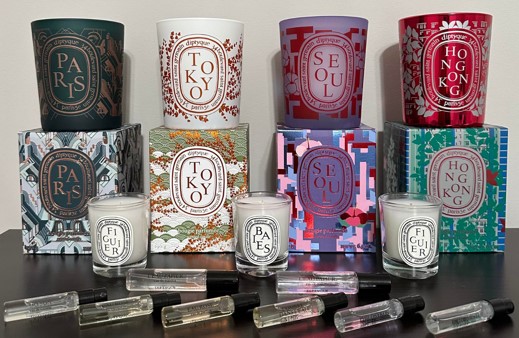
Yankee Candle – A Household Brand in scented candles
Yankee Candle is a well-known brand of candles with a large range of scented candles, wax melts, and home fragrance products. Established in 1969, the brand has gained recognition for offering long-lasting, richly scented candles for any season or occasion. With hundreds of fragrances, including some of the fan-favorite holiday scents, Yankee Candle appeals to a wide consumer base.
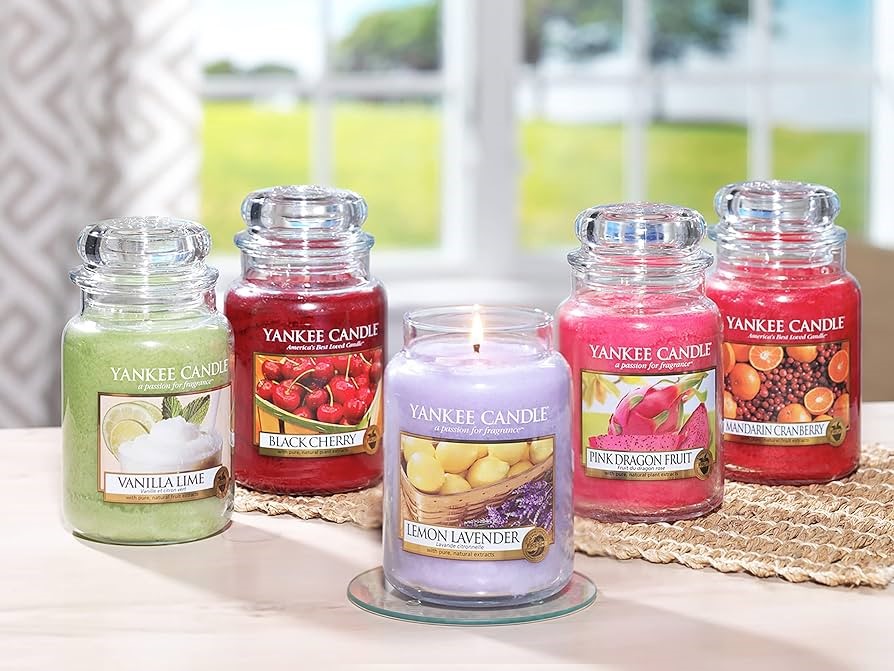
Bath & Body Works – Innovating with Seasonal Collections
Bath & Body Works has taken its place among the leaders of candle manufacturers primarily through its strategy on seasonal collections. The three-wick candle has been one of the hallmark offerings of this company, but a limited number of seasonal collections associated with holidays and changing seasons makes the candles extremely popular because the customer perceives urgency.
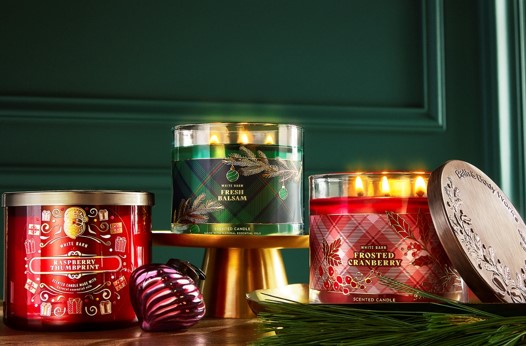
P.F. Candle Co. Mastering the Art of Handmade Candles
P.F. Candle Co. was initially a small business selling handmade, eco-friendly soy candles, but it gained immense market share due to the strength of its storytelling and social media marketing. This connection was established because the brand packaging was rustic, use minimalist fonts and design, and committed to sustainable ingredients, a preference of many consumers who favored handmade, artisanal products.
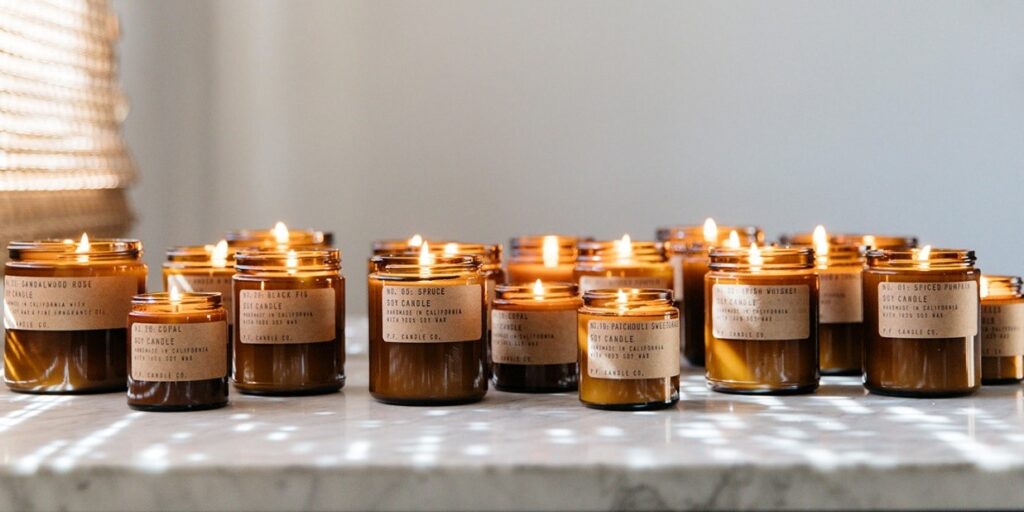
Part 3: Why Start a Candle Business?
The candle business is booming with huge opportunities for entrepreneurs. Some good reasons how to start a candle business are discussed below:
Market Statistics and Growth Potential
- The global candle market was at $12 billion in 2023 and projected to grow continuously.
- In the United States, the candle industry alone generated more than $3.5 billion annually.
- Increasing consumer interest in self-care, home fragrances, and sustainability is driving demand for high-quality, artisan candles.
- Online sales of candles have skyrocketed because of e-Commerce platforms like Etsy, Amazon, and Shopify.
- Handmade and eco-friendly candles are extremely popular today, and the consumers are ready to pay the premium for a sustainable product.
The demand for candles is also in high supply coupled with the aspect of working at home makes candle business one good venture to embrace by novice business people.
Part 4: Challenges to Consider Before Starting a Candle Business
Even as the candle business has so much to its benefit, there also comes along many challenges which young entrepreneurs will encounter if they want to find about how to start a candle business.
Competition
Competition is perhaps the biggest problem. The market is saturated by thousands of small businesses competing with each other to get the customers’ attention. A strong brand identity, unique products, and effective marketing will be required in order to come out on top. Just producing candles is not enough; owners needs how to start a candle business to carve out a unique niche for themselves through high-quality ingredients, eco-friendly packaging, or exclusive fragrances.
Pricing Strategy
There is the pricing aspect. It’s important to achieve a fair price that makes goods both affordable and profitable. Low-priced candle sales may initially attract a lot of customers, but this strategy becomes unsustainable in the long run. Pricing candles too expensively may also be too much for potential buyers to bear. Market research and competitor pricing analysis are fundamentals for entrepreneurs to formulate a plan that fits in the customers’ limits.
Supply Chain & Sourcing
Supply chain management can also be a challenge. Raw materials such as wax, wicks, and fragrance oils affect the quality of the product produced. Reliable sources and inventory of raw materials reduce delays and shortage of raw materials. As production increases, production must be increased in a scalable manner while quality control is observed.
Candle Safety Regulations
Another aspect is candle safety regulations. Because candles involve fire and heat, they must comply with safety standards set by regulatory bodies. In the U.S., the National Candle Association has guidelines on proper labeling, wick testing, and fire safety measures. It should be ensured, therefore, compliance with these rules to protect business and its clients.
Part 5: Step-by-Step Guide to Starting a Candle Business
Starting a candle business requires a bit of creativity, planning, and business strategy. From the mastering of art candle-making to establishing a good brand identity, every step takes one closer to achieving success. This guide shall take you through all the fundamental steps on how to start a candle business from the selection of appropriate materials, determining your niche, budgeting, and the composition of a business plan.
Step 1: Learn the Art of Candle-Making
Candle making is both art and science. Although the process of candle making appears simple, good-quality candle making requires the knowledge of various wax types, fragrances, and wicks. If you want to know how to start a candle business then these elements should be accomplished well, then you will end up with candles that burn straight, smell great, and fit the target market.
Different Types of Wax
The burning time, scent throw, and eco-friendliness of the candle are determined by the type of wax. Some common types of wax are soy, beeswax, paraffin, and coconut wax.
- Soy wax: It is an eco-friendly, renewable resource that is derived from soybean oil. It burns cleaner and longer than paraffin wax and is a favorite among environmentally conscious consumers.
- Beeswax: It is a natural, premium wax with a delicate honey fragrance and air-cleansing properties. It has a slow burn rate and less soot than other waxes, making it suitable for high-end candle companies.
- Paraffin wax: It is the most widely used wax in the industry due to its affordability and strong scent throw. It commonly found in mass-produced candles but has received criticism for releasing potentially harmful chemicals when burned.
- Coconut wax: It is a premium, renewable alternative that gives candles a smooth, creamy texture and excellent scent throw retention. It also burns cleaner than paraffin and will blend well with other waxes to enhance candle performance.
Choosing the Right Fragrance Oils and Wicks
The fragrance of a candle is one of its best-selling points. High-quality fragrance oils guarantee that your candles produce a pleasant and long-lasting aroma, so choose carefully. If you are opting for natural scents, you can use essential oils; however, essential oils may not always provide a strong fragrance throw while burning. Choosing the appropriate wick is also essential. Wicks have different sizes and materials, and the wrong selection can lead to a poor burning performance. Clean burns are preferred with cotton wicks, and wooden wicks create a crackling effect to add another dimension to the sensory experience of a candle.
Step 2: Choose Your Candle Niche and Brand Identity
There are countless candle brands. A niche helps your candle business to stick out from the competition. This kind of brand identity and targeted market is what will attract the right kind of customers to your business to develop a loyal following.
Identify your target market
Who you will be selling to shapes what products to create, pricing, and a marketing plan. Here are the most popular candle business niches:
- Luxury Candle buyers seek high-quality candles for quality ingredients, looking for high-ticketed sales opportunities from unique fragrances, upscale packaging, and experience.
- Eco-friendly consumers want eco-friendly, non-toxic candles that are made from natural materials like soy wax, coconut wax, or beeswax.
- Spiritual and meditation users will buy candles for relaxation, yoga, or spiritual practices. They like candles scented with essential oils, crystals, or herbs to promote wellness.
- Gift-giving and event planning customers are interested in candles that are excellent gifts or perfect for a special occasion. Seasonal or personalized candles are of interest to these customers.
Defining Your Unique Selling Proposition (USP)
Your USP is what differentiates your brand from competitors. It may be a collection of fragrance, made from all-natural ingredients, or unique candle designs. A well-defined USP helps position your brand and attracts loyal customers.
Step 3: Plan Your Budget and Secure Funding
It’s always very important for how to start a candle business by planning financially. Understanding the cost of your startup and getting enough funding to prevent future financial stress.
Breakdown of Startup Costs
Setting up a candle business involves initial investment in supplies, equipment, branding, and legal fees. Common startup costs include:
- Supplies: Wax, wicks, fragrance oils, dyes, and containers.
- Equipment: Melting pots, thermometers, mixing tools, and candle molds.
- Branding: Logo design, website development, and marketing materials.
- Legal fees: Business registration, insurance, and safety certifications.
Estimating Ongoing Expenses
In addition to starting costs, cost operating expenses, such as materials, packaging, marketing, and shipping, must be observed. This keeps track of expenses so that profitability is maintained and losses are avoided.
Step 4: Write a Business Plan
A business plan is very vital in organizing your business, getting funds, and even in planning for the future on how to start a candle business brand.
Why a Business Plan is Crucial for Success
It will organize your thoughts, identify the challenges ahead, and keep you track of progress. The plan is also a guide to investors or even lenders.
Key Components of a Candle Business Plan
- Executive Summary: Briefly outline your business, your mission, and objectives.
- Market Research: Knowledge of trends, competitors, and customer demand within the industry.
- Product Offerings and Pricing Strategy: Details regarding your candle products and pricing model.
- Marketing and Sales Strategy: How you would market and sell your candles.
- Financial Projections: Estimated profits and losses, break-even point, and expected growth.
Step 5: Register Your Business and Meet Legal Requirements
Before you sell your candles, you should ensure that you are registered and have met all legal aspects. Proper steps help in ensuring the law and safeguarding a business to avoid certain risks.
Choosing the Right Business Structure
The form of the business will determine your legal liability, taxes, as well as operations. There is
- Sole Proprietorship: This form is easy and inexpensive, but with no protection from personal liabilities.
- Limited Liability Company (LLC): This is one of the most popular business structures for small businesses because it provides liability protection while keeping taxes and paperwork at a manageable level.
- Corporation: More complex and suited for large businesses, but it offers the strongest liability protection.
Registering Your Business Name and Domain
Once you settle on your business name, register with your local government to protect your brand. The second important task is to secure a matching domain name for your website so you can have a good online presence.
Understanding Labeling Laws and Safety Compliance
Candle labeling laws mandate that you provide information on ingredients, warnings, and manufacturer details. In the United States, the Consumer Product Safety Commission (CPSC) enforces candle safety regulations. Proper labeling helps build trust with customers and ensures compliance.
Getting Business Insurance for Protection
Business insurance will safeguard your candle business from unexpected occurrences such as accidents, product flaws, or damage to property. General liability is a must have, especially if you are planning to sell in markets or if you are going to ship candles all over the country.
Step 6: Develop Your Candle Product Line
A thriving candle business must provide a varied range of good-quality products. Carefully crafting your candle line attracts different market segments and builds repeat business.
Creating a Diverse Product Range
Offer a range of candles to accommodate multiple preferences and seasonal trends. You might want to consider including these types in your offerings as well:
- Signature Scented Candles: Develop unique fragrances that become synonymous with your brand.
- Seasonal and Holiday Collections: Low productions encourage urgency and create a seasonal sales sensation.
- Personalized and Custom Candles: Use custom labels, scents, or colors to make perfect gifts and special event mementos.
- Gift Sets and Wholesale Options: Gift shoppers like bundled sets or bulk order options, while retailers appreciate them.
Product Consistency and Quality Control
Consistency in scent throw, burn time, and packaging is key to establishing a strong brand. Perform test burns periodically to ensure maintaining quality standards. Using quality wax, wicks, and fragrance oils from reputable suppliers will provide consistency from batch to batch.
Finding Reliable Suppliers for Wax, Wicks, and Packaging
High-quality materials are the key to premium candles. Seek suppliers with a history of delivering consistent product offerings and offering competitive pricing. Relationships with wholesalers may be beneficial to lower cost and provide continuity in supply.
Eco-Friendly and Sustainable Packaging Solutions
Sustainable packaging is becoming increasingly popular among consumers. Using recyclable containers, biodegradable labels, and minimal plastic attracts eco-conscious buyers. Glass jars, tin containers, or refillable candle options use for an environmentally friendly touch.
Step 7: Set Up Your Online Store and Sales Channels
With a well-developed product line, the next step is to establish your sales channels. Selling online offers the most reach, but exploring local sales opportunities can also help grow your business.
Choosing the Right e-Commerce Platform
Selecting the right platform for your online store is key to your success. Popular options include:
- Shopify: Easy to use, with built-in payment processing and customization options.
- Etsy: Ideal for any handmade business, and it brings customers looking specifically for unique candles.
- Amazon: Increases your ability to reach but also increases your competition and sales fees.
- WooCommerce: Great for anyone who uses WordPress and wants all control over your online store.
Designing a User-Friendly and SEO-Optimized Website
Your website needs to be easy to use, aesthetically pleasing, and search engine-optimized (SEO). A well-laid-out design, rapid page loading speed, and responsive mobile design are good for customer experience. Adding keywords like “handmade soy candles” or “luxury scented candles” to your website may do wonders for your Google page ranking.
Step 8: Market and Promote Your Candle Business
Effective marketing is the secret to attracting customers and generating sales. A mix of online and offline strategies will help you build your brand.
Building a Strong Online Presence
A good online presence separates your brand from others. Leverage the marketing channels like:
- Social Media Marketing: Industries such as Instagram, Pinterest, or TikTok work well for aesthetic products like candles. Utilize product images, behind-the-scenes, and customer reviews.
- Content Marketing: Write blogs on the care of your candle, benefits of fragrances, or how-to projects involving candles that will drive organic traffic to your website.
- Email Marketing and Loyalty Programs: Sending out exclusive offers, product releases, and newsletters to subscribers of emails collected from customers keeps customers engaged.
Running Paid Ads on Facebook and Google
It immediately gives paid advertisements with instant traffic and sales. Through Facebook and Instagram ads, you can target your demographics; with Google Ads, you can target search intent for your customers. Start off with a small budget and track the performance so you can make necessary optimizations for campaigns.
Customer Reviews and Testimonials
Positive reviews and testimonials give trust and credibility. Ask satisfied customers to leave reviews on your website, social media, or platforms like Etsy. A collection of user-generated content will drive potential buyers.
Part 6: Why a Professional Logo Matters for Your Candle Business
One of the most important elements that will contribute to how to start a candle business brand when you start with your professional logo. It is the visual identity of your business and likely to make customers recognize it instantly. You can be selling products online, online at craft fairs, or in a store, your logo represents yourself and helps build perceptions for consumers to remember your brand.
Role of Logo in Brand Recognition
A good logo is the face of your candle business. It tells a story about your brand, communicates your values, and lays trust with a potential customer. On packaging, social media, or advertisements, immediately when people see the logo related to your product, there should be an instant association with it.
Part 7: Design Your Candle Business Logo with Arvin AI
A high-quality professional logo does not have to be expensive nor time-consuming. The Arvin AI enables one to create an original and attractive logo in just a few minutes, even when one has no graphic design knowledge. Arvin AI is the intuitive and friendly logo maker which helps entrepreneurs develop professional logos very easily. Unlike hiring a graphic designer, which can be costly and time-consuming, Arvin AI provides instant logo design solutions tailored to your brand’s style.
Key Features of Arvin AI
- AI-Powered Design Suggestions: Get personalized logo concepts based on your business name and industry.
- Extensive Icon and Font Library: Choose from a variety of symbols, typography styles, and design elements that fit your brand personality.
- Customizable Color Palettes: Experiment with different color combinations to create a visually appealing and brand-consistent logo.
- Instant Previews: See how your logo will look on packaging, business cards, and social media before finalizing the design.
- High-Resolution Downloads: Get print-ready logo files suitable for branding, marketing materials, and product packaging.
Steps to Using Arvin AI in Creating Your Logo
Step 1: Register and Login
Access the logo-making tool at the site of Arvin AI and create your account then login for use.
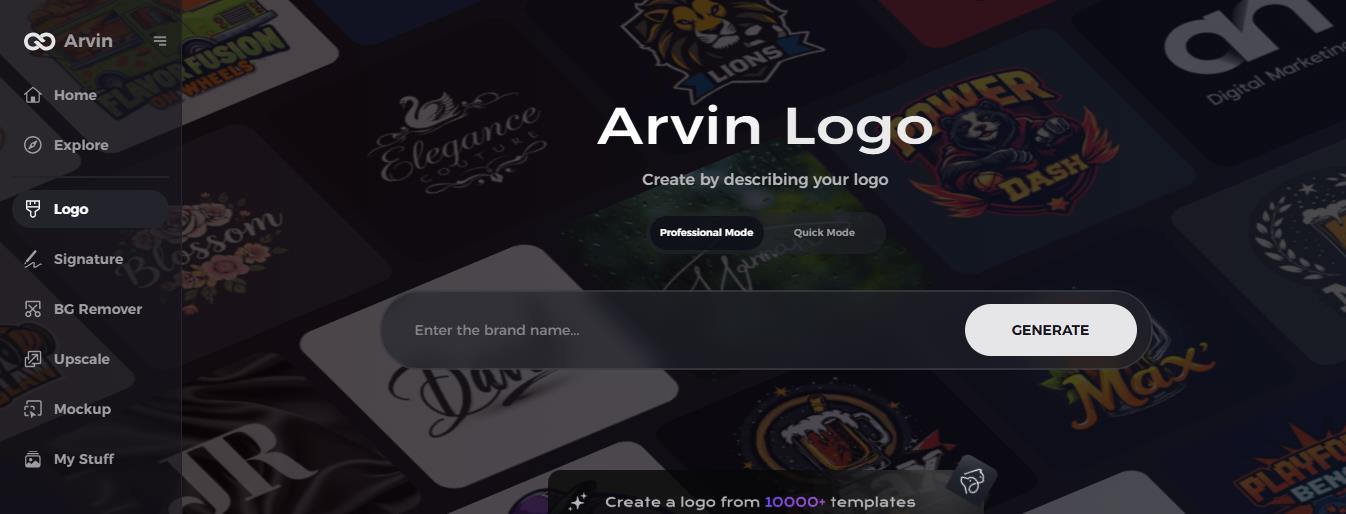
Step 2: Provide Information about the Brand and Your Desire
Write in the space available the name of your brand, tagline and line of industry, your font choice, image idea, and other.
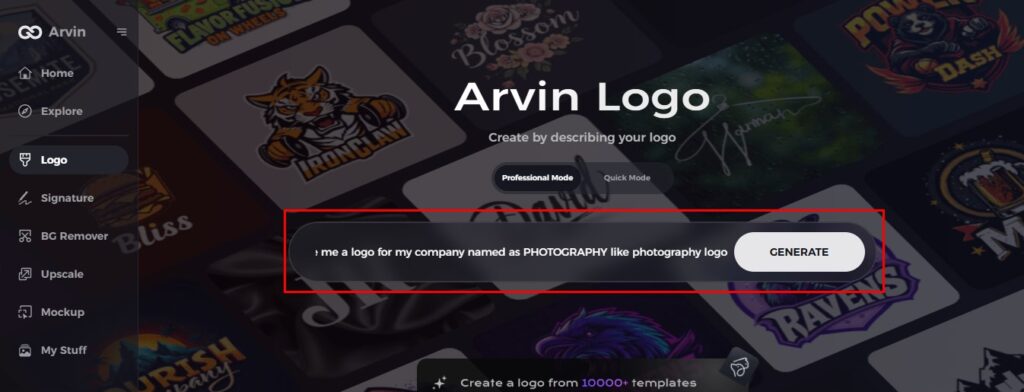
Step 3: Select your industry
Choose your niche, whether it’s portraits, events, or nature, to help AI generate the most fitting logo options.
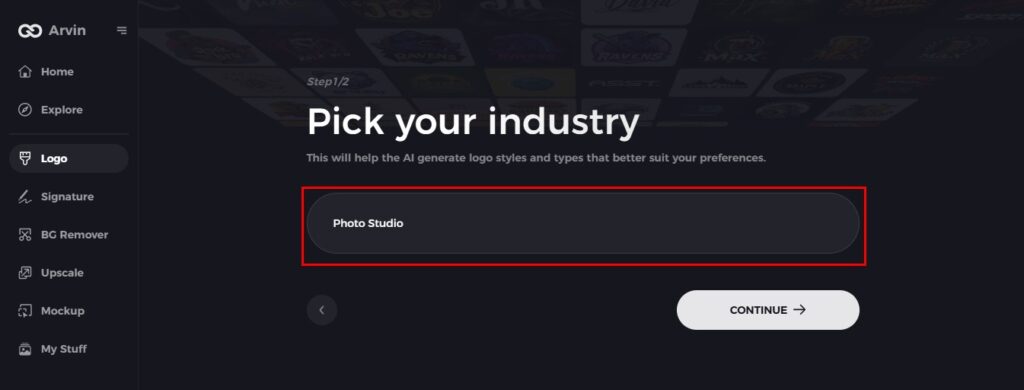
Step 4: Choose Your Logo Style
Pick a logo style that matches your vision. This will guide AI in creating a logo inspired by your preferences.
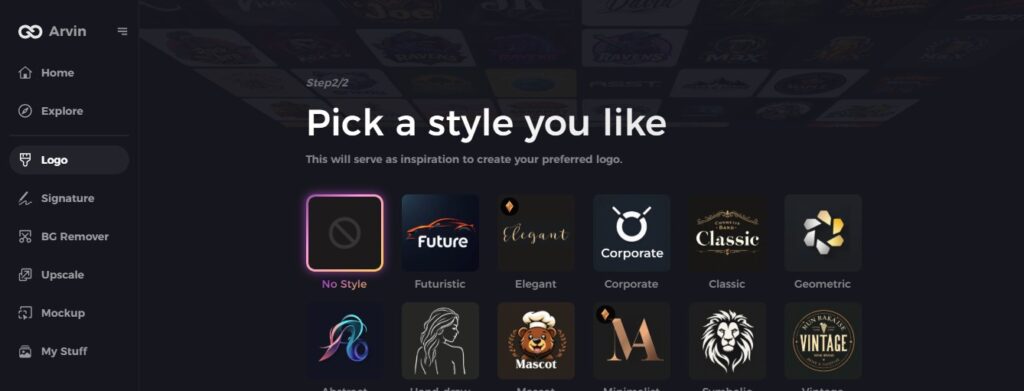
Step 5: Personalize Your Logo with Arvin AI Tools
After Arvin AI generates your logo, customize it using available tools—adjust font styles, layout, and icon positions until you’re happy with the result.

Step 6: Save and Download Your Logo
Preview your logo, then save it in a high-resolution format suitable for both print and digital use.

Conclusion
A successful candle business would open with thorough planning, creativity, and branding. Based on the eight essential steps of building a profitable candle brand that attracts loyal customers, a professional logo stands to be an important aspect on how to start a candle business. When you ready to launch your candle business. First let’s get a professional logo designed by Arvin AI. With the platform’s user-friendly interface and advanced customization capabilities, you can now create that attractive logo in a matter of minutes.
FAQs About how to start a candle business
How much money do I need to start a candle business?
Normally, a candle business will cost about $500 to $2,000, depending on the size of your candle business. Cost factors include the supplies: wax, wicks, fragrance oils; packaging materials; equipment and website setup, as well as marketing.
What are the best-selling types of candles?
The main types of hot-selling candles would include soy candle scents, aromatherapy candles, very expensive hand-poured candles, seasonal-themed candles, and the custom candles.
Do I need a license to sell homemade candles?
Yes, in most places, you’ll need a business license to sell candles legally. Some states or countries also require a sales tax permit and product labeling compliance for consumer safety.
Where can I sell my candles?
You can sell candles through eCommerce websites like Shopify, Etsy, and Amazon; craft fairs; pop-up markets; retail boutiques; and wholesale partnerships.

